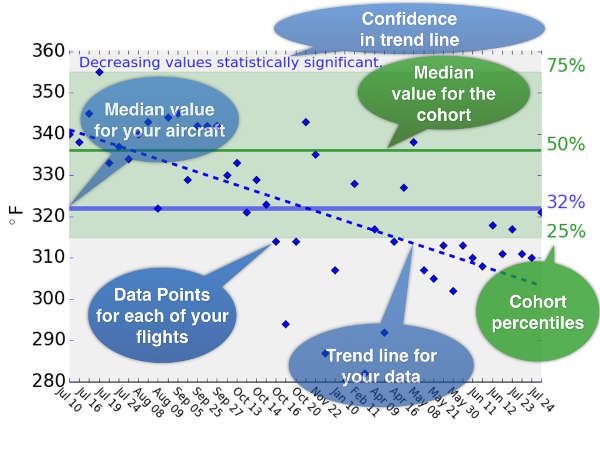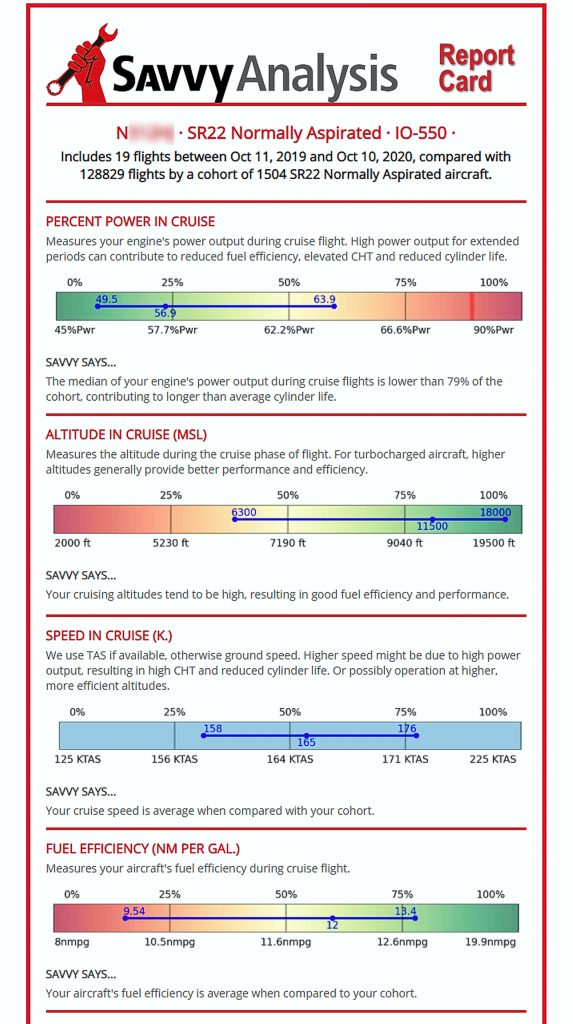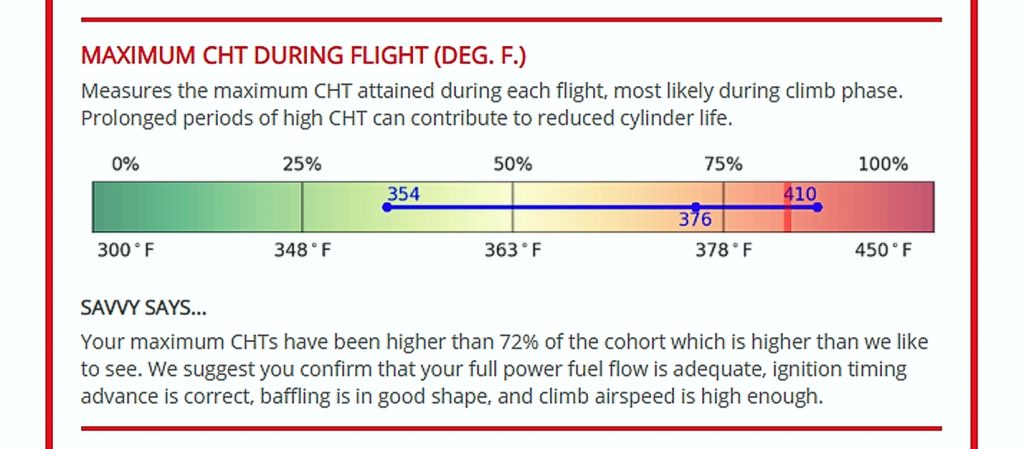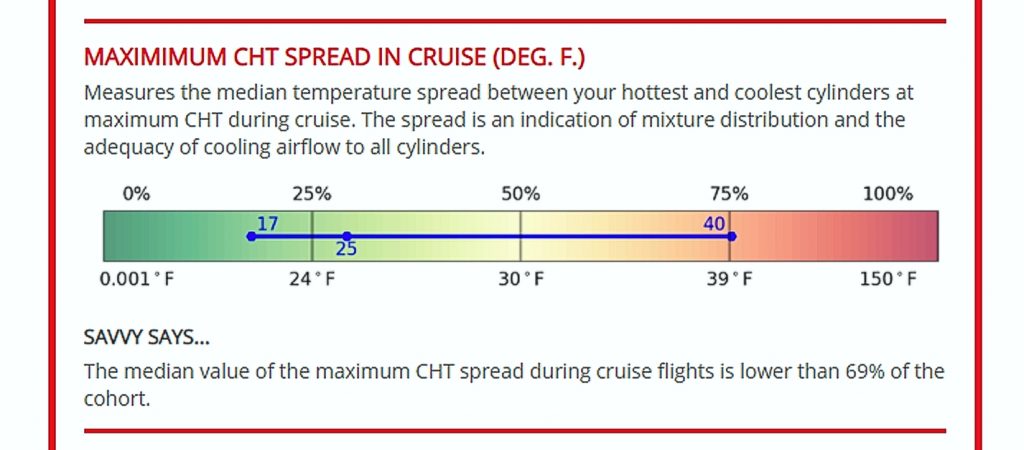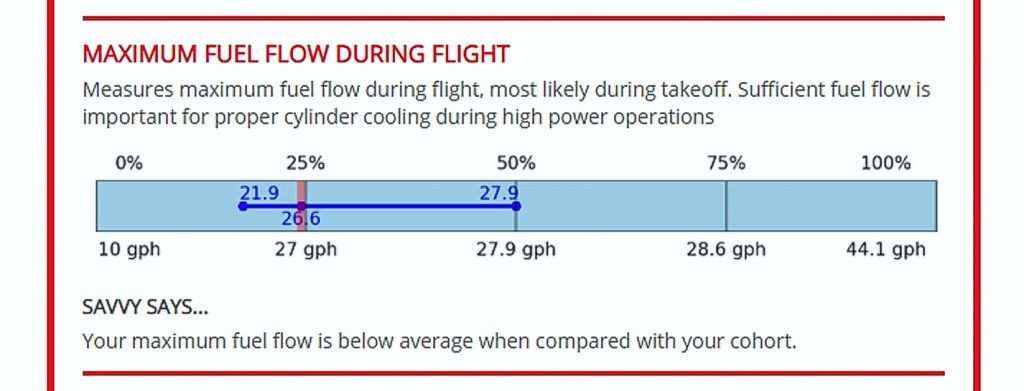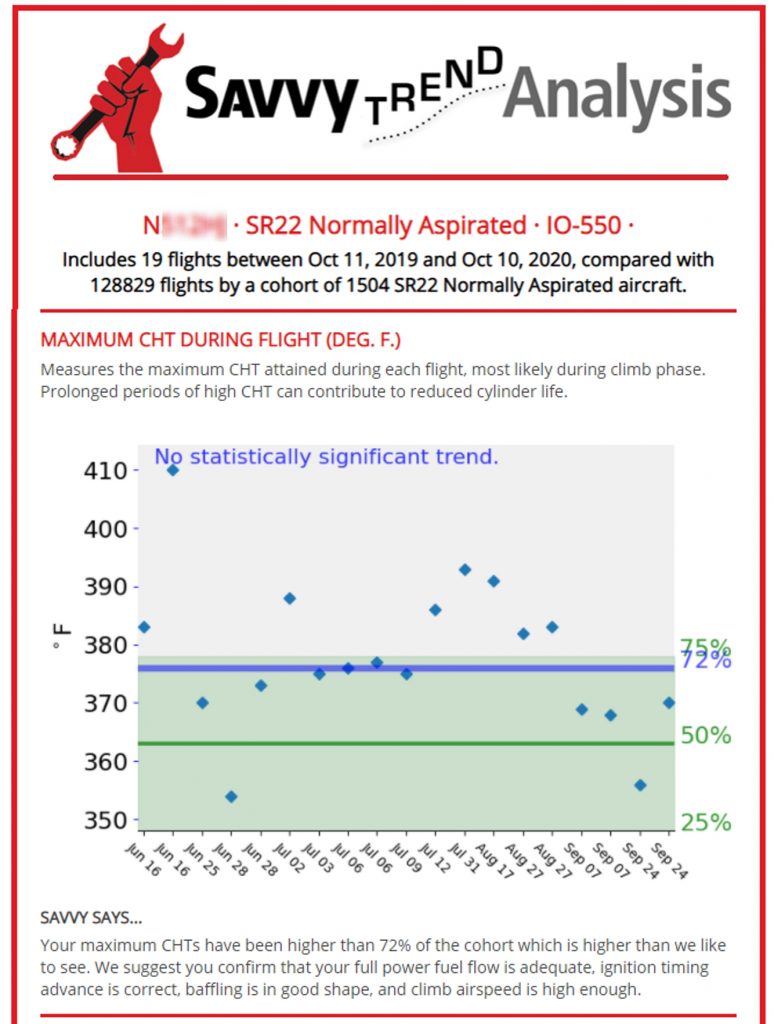
Report Cards and Trend Reports
Actionable intelligence from your engine monitor data
Engine monitor data can be difficult to understand. On every flight, your engine monitor captures tens of thousands of data points from dozens of sensors. This data can tell you a great deal about the health, performance and efficiency of your airplane and its powerplant. But how can you tell what’s normal or abnormal? And if abnormal, how can you know what to do about it? (Don’t expect your A&P to help you, most of them have litle or no knowledge or training in this area.)
Savvy’s innovative Report Cards and Trend Reports transform your engine monitor data into easy-to-understand infographics that enable you to determine quickly what’s normal or abnormal and how to address any abnormalities. The Report Card compares numerous critical parameters recorded by your engine monitor with a “cohort” of hundreds or thousands of other airplanes of the same make and model that we follow so you can see where your airplane falls “on the curve.” Here’s a list of the aircraft makes and models for which we presently have cohorts (and we’re adding more weekly.)
The Trend Report adds the time dimension to alert you to any statistically significant trends in your data (e.g., decreasing oil pressure, increasing CHT). These valuable reports are available to SavvyMx, SavvyQA and SavvyAnalysis Pro clients.

